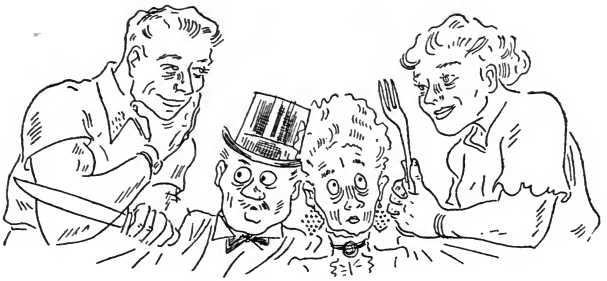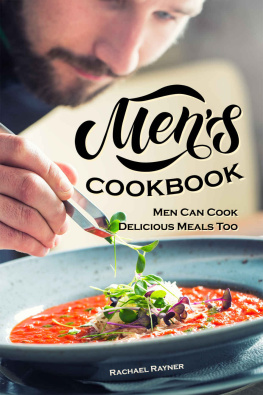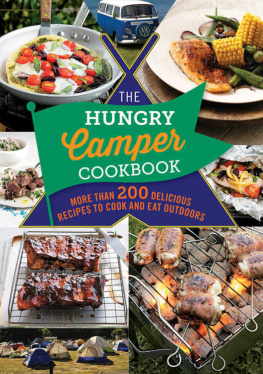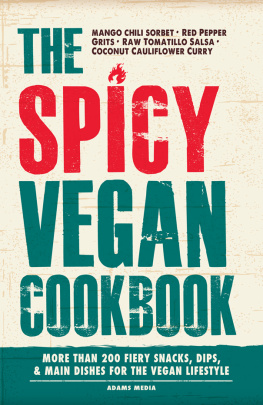New digital edition of:
Most For Your Money - Cookbook
by Cora, Rose and Bob Brown
1938 by Cora, Rose and Robert Carlton Brown
Published by Modern Age Books, inc.
Copyright 2016 - Edizioni Savine
email: info@edizionisavine.it

ISBN 978-88-96365-81-6


XXIX. - We Dine for the Poor
In Old Cookery Books W. C. Hazlitt tells how a farm owner in Shakespeares time indulged his hinds by feeding them some of the meat they fattened for him, twice a week, on Sunday and Thursday, which of course is much more than the modern sharecropper gets. But Hazlitt says this was exceptionally good treatment and gives us quaint culinary news from another food writer, Tobias Venner, who shook a mean quill in the time of Good Queen Bess:
Venner considered two meals a day sufficient for all ordinary people, breakfast at eleven and supper at six (as at the universities); but he thought that children and the aged or infirm could not be tied to any rule. He condemns bulls beef as rank, unpleasant, and indigestible, and holds it best for the laborer; which seems to indicate more than anything else the low state of knowledge in the grazier, when Venner wrote: but there is something beyond friendly counsel where our author dissuades the poor from eating partridges, because they are calculated to promote asthma. Wherefore, he ingeniously says, when they shall chance to meet with a covey of young partridges, they were much better to bestow them upon such, for whom they are convenient.
And all the way through culinary literature we find this idea persisting: that the fat of the land is far too good for the people who produce it. Workers, until recently, were supposed to have different tasters and partridges have always been considered too rich for their blood. This line of unreasoning was established by gormandizing medieval monks who spent most of their waking hours sampling special dishes and brews, rolling their eyes and patting their stomachs, while they purred, Ah, this is much too good for the laity. To be sure, these charitable priests gave beer and black bread to pilgrims who tottered starving to their gates, but it was a cheaply brewed small beer handed out with coarse bread while they regaled themselves on specially brewed strong beer with fancy cakes, and even in the Lenten season brotherly cooks smuggled into their refectories great dishes of forbidden meat camouflaged under coverings of fish, which made chance penitents think the fathers were keeping their fast honestly.
We still have traces of the best-being-none-too-good-for-the-clergy in poor women who save a drop of good drink they can't afford to taste themselves to give to the priest when he comes to pray with them. And among Protestants the Sunday chicken dinner for the minister is an established custom, with the wishbone for him and the backbone for the family, who subsist on corned beef the rest of the week. All of which parallels the practice in darkest Africa where the medicine men get free beer parties to keep them from casting the evil eye on tribal herbs.
The low food standards of English workers in 1750 is recorded in the preface to Mrs. Glasse's cookbook where, for the first time, she points to the great gulf between the diets of the classes and tells of difficulties she encountered in an attempt to instruct the lower sort:
For example, when I bid them lard a fowl, if I should bid them lard with large lardoons they would not know what I meant; but when I say they must lard with little pieces of Bacon, they know what I mean.
In spite of this, during the craft period the labourers dyet is recorded as Milk, butter and cheese .... and a pot of good Beer quickens his spirits. On the other hand, a survey of today's worker's diet in the New York Times says he can't afford to buy milk, but subsists on pork and cereals, while nothing is said about the bad beer, now made with rice to give it a cheap kick, for which he pays a dime a glass. This looks like Liberty League propaganda, but it serves to remind us of Hoovers failure to provide two chickens in every pot, a failure everlastingly recorded in the name Hoover hog for the armadillo on which depression residents in Mexican-border Hoovervilles sub-subsist.
It is true also that the majority of dispossessed farmers, especially in the South, dont even get the pork, but exist on unappetizing cornmeal mush which they call hushpuppy because it attempts to still the inward cries of hunger. And Erskine Caldwell has shown us whole populations of 100% Americans who are down to a diet of grubs and clay. Likewise the grasshopper ravages have driven Western farmers to eating that pest which has left them nothing else to feed on, even as Chinese coolies were driven to making sweetmeats of roast locust thousands of years ago. And while baked grasshoppers are a genuine addition to our national menu, the same as cooked crows in the corn belt, the obvious objection to both is that theres nothing else to vary the monotony of the diet. It smacks of the enlisted Navy mans bean song, with the melancholy refrain, All American mothers, I want to say to you, Monday b-e-a-n-s, Tuesday s-o-o-u-p, Wednesday b-e-a-n-s all American mothers, I want to say to you!
For it doesnt matter how great a delicacy any food is, too much of it is plenty as is eloquently proved by early laws which forbade voracious Southern planters feeding their slaves terrapin more than twice a week and likewise shad and shad roe, both of which are expensive delicacies today but used to be so common they were shoveled out as the cheapest food, costing the owner nothing beyond the labor of bringing them in by the ton.
But now that the organization of labor is helping the toiler enjoy more of the fruits of his own production, theres no fear of his ever again slipping back to abjectly taking a repulsive diet lying down.
COOKERY FOR THE POOR
Passing from Shakespearean times to our revolutionary war period, let us observe the illuminating General Remarks and Hints in A New System of Domestic Cookery,formed upon principles of economy; and adapted to the use of private families throughout the United States, published in 1800 and signed significantly By a Lady.
I promised a few hints, to enable every family to assist the poor of their neighborhood at a very trivial expense; and these may be varied or amended at the discretion of the mistress.
Where cows are kept, a jug of skimmed milk is a valuable present, and a very common one.
When the oven is hot, a large pudding may be baked, and given to a sick or young family; and thus made that trouble is little: Into a deep coarse pan put half a pound of rice, four ounces of coarse sugar or molasses, two quarts of milk, and two ounces of drippings; set it cold into the oven. It will take a good while, but be an excellent solid food.
A very good meal may be bestowed in a thing called brewis which is thus made: Cut a very thick crust of bread, and put it into the pot where salt beef is boiling and near ready: it will attract some of the fat, and when swelled out, will be no unpalatable dish to those who rarely taste meat.
Although brewis brings up thoughts of hearty Scotch days when the top of the pot and tail of the herring were the choice servings reserved for the head of the house, this thin pot is more reminiscent of the Irish potato famine when a cold potato and a glass of buttermilk was almost a banquet. Our lady authoress considered a crust of bread soaked in the salt pork scum, that otherwise would have been skimmed off and thrown away, as a thing plenty good enough for those who rarely taste meat.
Next page











